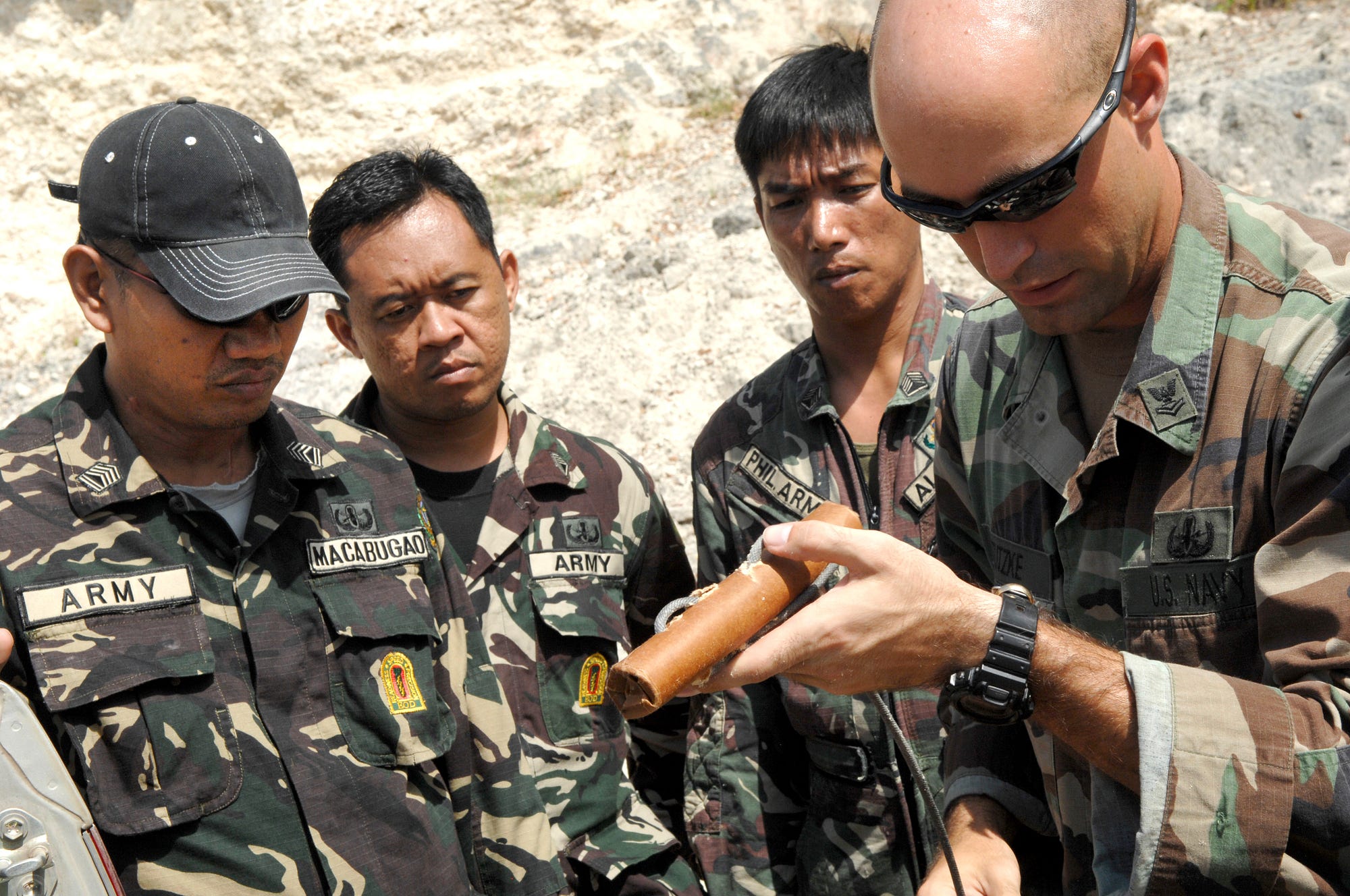Special troops help Manila with intel, training and transport
Despite reports that the unit has been disbanded, a secretive U.S. task force is still working with Philippine troops. But even when the element does stand down, American commandos will likely continue to have an important role in the archipelago nation … under some separate organization.
Just goes to show—sometimes switching up organizational charts, while maybe politically beneficial, doesn’t change the reality of day-to-day military operations.
In April, Washington and Manila agreed to refocus their efforts away from fighting Philippine terrorists and separatists. Two months later, the Pentagon’s Pacific headquarters announced plans to close down the Joint Special Operations Task Force-Philippines.
But “JSOTF-P is still active although the number of personnel assigned has been reduced,” Army major Kari McEwen told War Is Boring by email. The force is “about half [the size] from a few years ago when it was approximately 500,” McEwen added.
And Operation Enduring Freedom-Philippines—the codename for Washington’s mission in the country—is still up and running, U.S. Pacific command explained in response to a Freedom of Information Act request.
Since 2002, the American commandos have helped their Philippine counterparts fight terrorists and separatists in The Philippines’ restive south. The Southeast Asian country quickly became one of the first battlegrounds in Washington’s counterterrorism campaign that followed the 9/11 attacks.

Above—an American commando trains with Philippine troops in 2010. Army photo. At top—a U.S. Air Force MC-130 delivers aid in the aftermath of Typhoon Yolanda. Air Force photo
When Typhoon Yolanda swept through the country in 2013, “teams [were] spread over an area the size of New York to Chicago,” according to an after-action report War Is Boring obtained through another FOIA request.
At the time, the battalion-size unit also had its own small air force and navy, according to a separate declassified briefing.
Military crews and private contractors could snoop on militants and haul personnel and gear around the sprawling archipelago with their planes and helicopters. The small air arm included U-28 spy planes, a CASA 212 twin-engine transport and Bell 214 helicopters.
The task force’s specialized “mothership” vessel could help insert troops into isolated areas. The commandos also had access to smaller amphibious landing craft and other boats.
“Philippine Special Forces … [and] National Police Special Action Forces … instantly recognized the U.S. [Special Operations Forces] brethren” in the aftermath of the typhoon, the task force’s commander declared.
“In the Philippines. SOF has one of the most solid country-team relationships in the entire [region],” the commander’s report added. The task force had “the ability to communicate rapidly with nearly all 27 agencies in the embassy [in Manila].”
U.S. Pacific Command’s current plan is to preserve these relationships by taking a cadre of these commandos and attaching them to the so-called “PACOM Augmentation Team” already operating out of the embassy.

An American special operator talks with Philippine police in 2009. U.S. Navy photo
These augmentation teams are present in embassies around the Pacific performing similar missions. Five years ago, the team in Indonesia was managing “Special Operations Forces (SOF) support to U.S. counterterrorism (CT) activities,” according to a diplomatic cable released by WikiLeaks.
The element in The Philippines helped get the word out about aid and services in the wake of Typhoon Yolanda. However, American psychological warfare specialists also apply the same methods to promote friendly governments and disparage insurgent groups.
Of course, the team in The Philippines won’t be out in the field like the current task force is. But the commandos could continue to help share intelligence, ship supplies out to the front lines and move Manila’s troops around.
And as always, the Pentagon maintains plenty of specialized forces in the Pacific region that could rush to The Philippines in a crisis. Two Air Force MC-130s transport planes landed at Clark Air Base in the aftermath of Typhoon Yolanda.
These transports—which are customized for dropping commandos and gear into hostile areas—were already on their way to the country for a training exercise. Special Operations Command also sent a single smaller C-146 to help out.
The Air Force used these two- and four-engine transports to deliver vital humanitarian aid. But the flying branch could just as easily have brought in additional personnel or supplies to help out Manila’s troops.
The regular commando training regimen—nicknamed Balance Piston—is unlikely to end, regardless of where American Special Operations Forces are located in the country. And special operators also take part in larger events such as the annual amphibious landing exercise that wrapped up in October.
The new Enhanced Defense Cooperation Agreement “will [continue to] facilitate the enhanced rotational presence of U.S. forces, expand opportunities for bilateral training, and support the long-term modernization of the armed forces of The Philippines,” a spokesman for Pacific Command pointed out.
“The long-standing alliance between The Philippines and the United States has contributed to peace, stability and prosperity in the Asia-Pacific region for more than 60 years.”

No comments:
Post a Comment
Note: Only a member of this blog may post a comment.